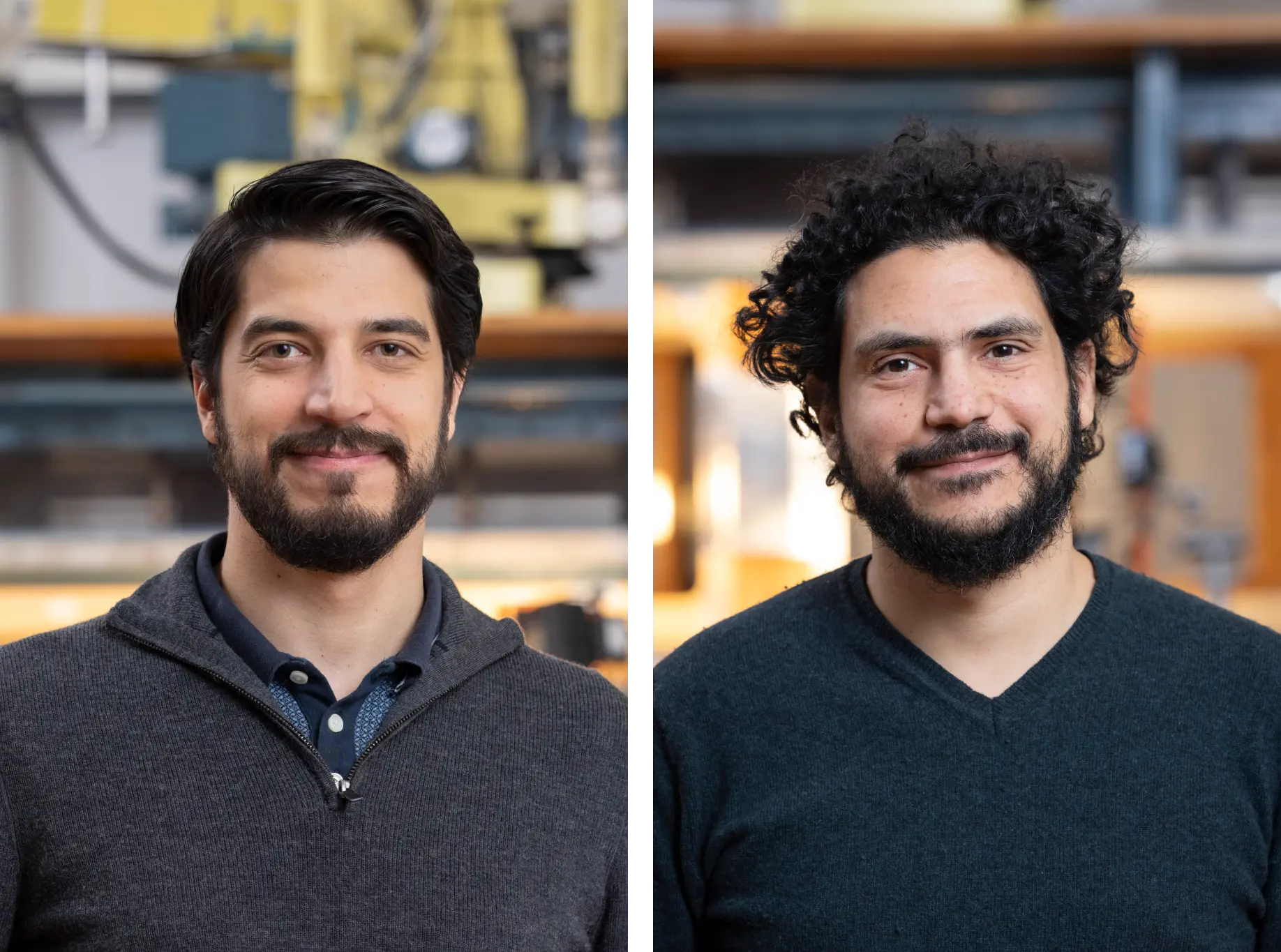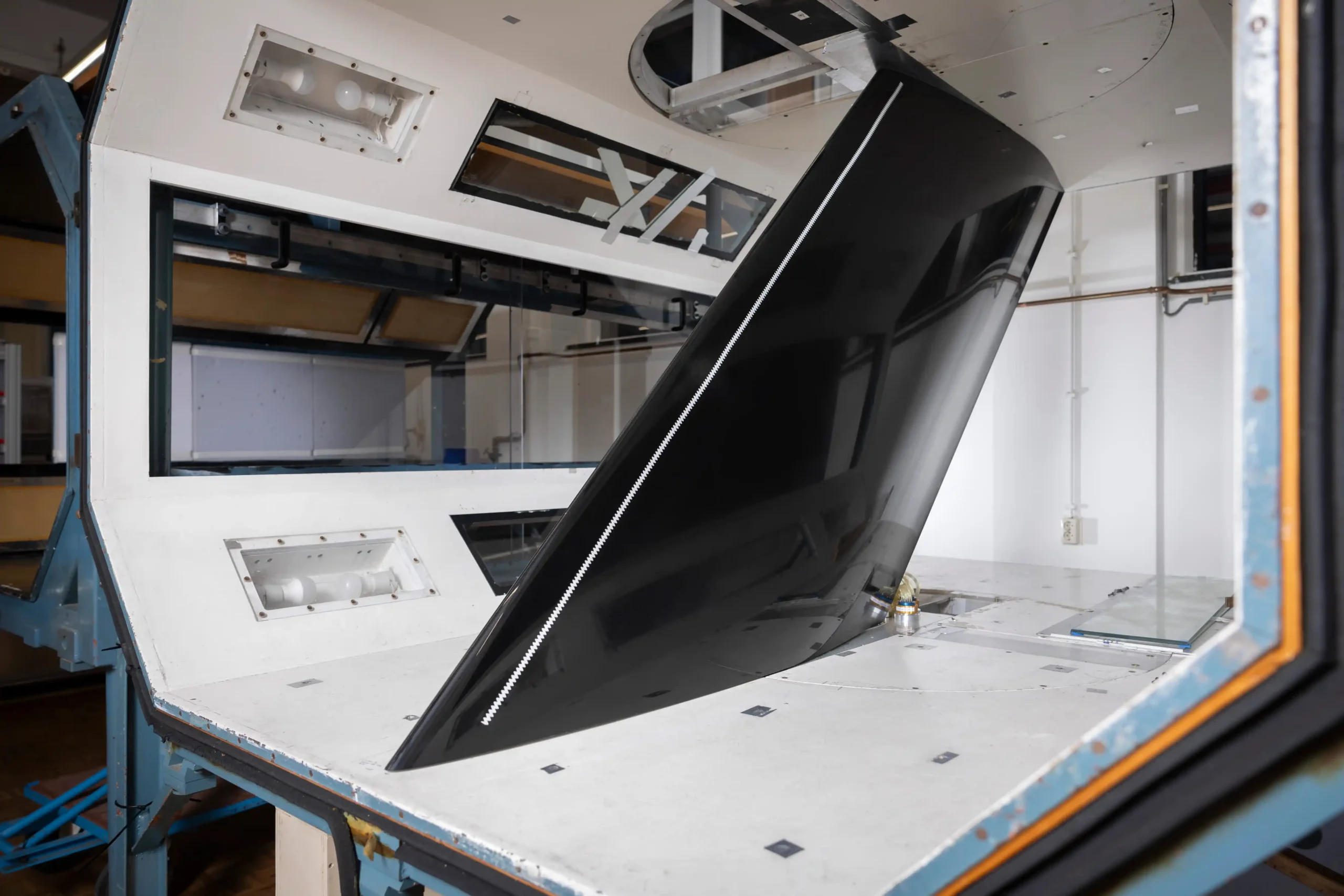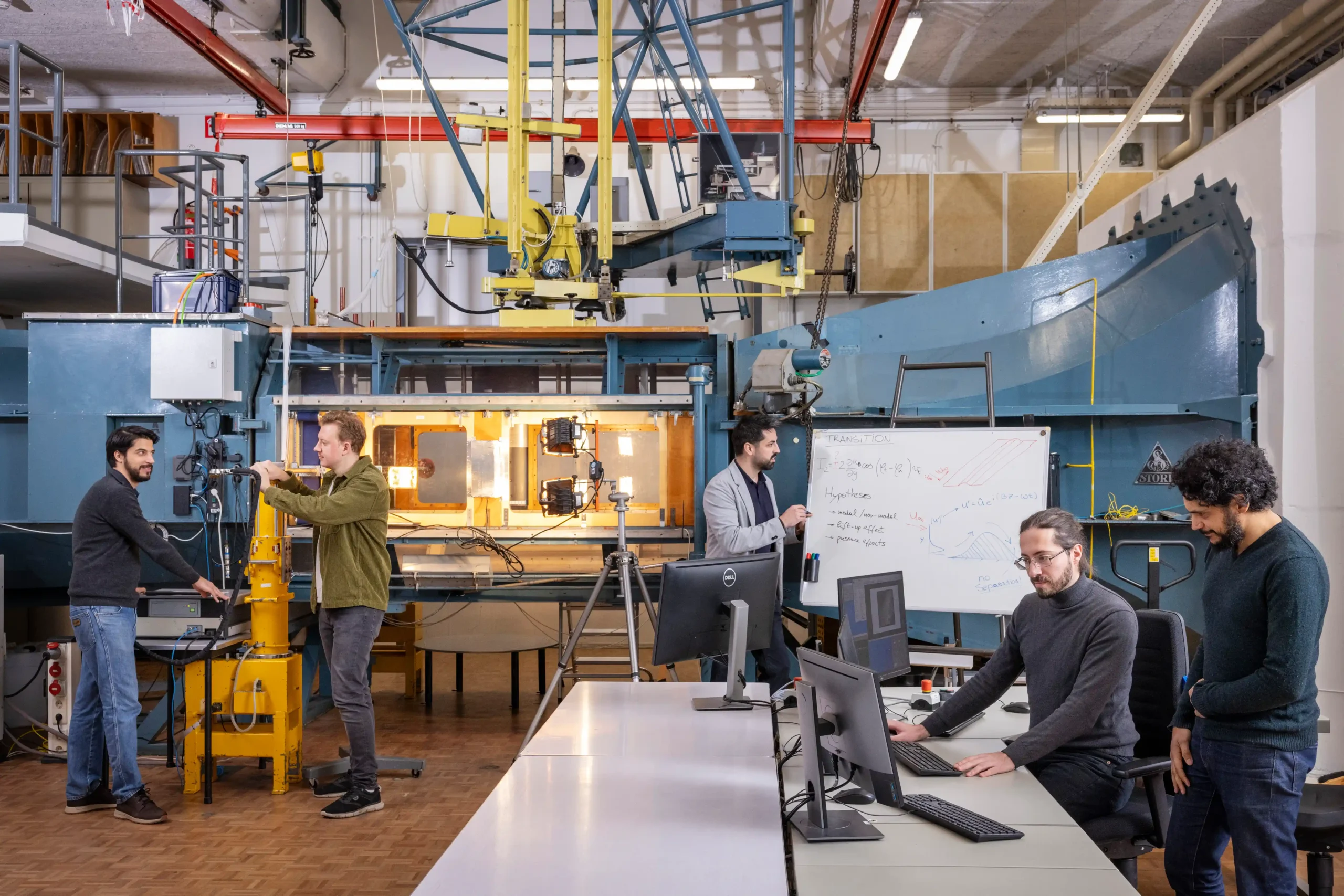Serendipity
Serendipity

The greater the drag, or air resistance, the more energy you need to propel something forward. It’s as true for bicycle rides as it is for any type of transport, including flying. With a view to cleaner aviation, it is important to reduce drag. You can affect drag by manipulating the air flows around an aircraft. Professor Marios Kotsonis (Aerospace Engineering) is conducting research into this matter. He received a Vici grant for this from research funder NWO last February. His research group’s main focus is laminar flow on arrow wings – wings you find on virtually all types of passenger aircraft. “They’re positioned at an angle to the body of the aircraft to reduce shock waves at high speeds”, explains post-doc Dr Alberto Rius Vidales (Mechanical Engineering). “However, at the transition of air flows, the angled arrow wings behave differently to their straighter counterparts.” One of the major challenges in preserving laminar flow for as long as possible is the fact that arrow wings consist of multiple panels. “The panels are screwed together and the joints between the panels produce small bumps on the wing, known as steps. All these imperfections affect the transition from laminar to turbulent flow. The bumpier the surface, the sooner the transition will take place.”
Surprise
However, for wings of large aircraft at cruising altitude, you want as much laminar flow as possible and for that you need to minimise the unevenness on the wing. During the group’s wind tunnel tests, they discovered that this is not always the case. During one such test in 2019, Vidalus, then a PhD student, chanced upon a discovery that was equal parts surprising and groundbreaking. “We researched the adverse effects of steps, small irregularities that occur on an aircraft wing at the transitions between different panels, on the arrow wing, expecting them to speed up the transition from laminar to turbulent flow. To my great surprise, however, I discovered that rather than speed up the transition, they actually delayed it under certain circumstances. It was incredibly counterintuitive. I couldn’t believe what I was seeing.” Repetition of the wind tunnel test, mathematical calculations and simulations all pointed to the same conclusion. “Then we realised that we had discovered something extraordinary”, says professor Marios Kotsonis. “It was very confusing because this is the opposite of how science works. You usually observe something, draw up a hypothesis and test whether your hypothesis is correct, but this time around, we observed an entirely counterintuitive yet groundbreaking phenomenon. This forced us to redesign our entire plan.” The findings prompted follow-up research into the forward-facing step that delayed the transition to turbulent flow. Through calculations and experiments, they managed to increase the effect further and developed a way of making the step smoother and longer. Kotsonis: “We called this the Delft Laminar Hump, or DeLah. Because of its pioneering nature and simplicity, we patented it.” However, the fundamental working principle of the Hump is still largely unknown. Kotsonis: “We know it works under certain circumstances, but not exactly why. Understanding this is the next important phase in our research.”
Fuel saving
The main question that the researchers have to answer now is whether the DeLaH also works in practice. Vidales: “So far, all our tests have been pretty small-scale. And while you need small-scale tests to prove the concept works, we also want to know whether our hypotheses and theories hold up when the Hump is installed on a real wing.” A few rough calculations are all it takes for Kotsonis to highlight the enormous potential of the DeLaH. “Making an arrow wing 50% laminar would result in fuel savings of around 15 percent. To put that in perspective: fuel consumption only improves by around 2 to 3 percent with each new generation of aircraft. And that requires all sorts of improvements, such as to the engine and aerodynamics, but a relatively simple adjustment could yield considerably greater gains.”
Accidentally stumbling onto something unexpected is a common occurrence for scientists. This time: will an unexpected research result lead to a breakthrough in climate-neutral aviation?
Text Hidde Jansen

Alberto Rius Vidales (left) and Marios Kotsonis (right)
© TU Delft


Arrow wings are positioned at an angle to the body of the aircraft to reduce shock waves at high speeds. Marios Kotsonis’ group is conducting research on laminar flow on arrow wings.
© TU Delft
Calm and chaotic flows
There are roughly two categories of air flow: laminar and turbulent flow. When air hits the nose or wings of an aircraft, for example, it is always laminar. Kotsonis: “A laminar flow spreads across the surface very calmly and smoothly, so there is hardly any friction, which means drag is low. At a certain point, however, this flow becomes turbulent, which is known as the transition. A turbulent flow is very chaotic and fluctuates a lot, significantly increasing drag. You want to delay the transition from laminar to turbulent air flow for as long as possible.”

Accidentally stumbling onto something unexpected is a common occurrence for scientists. This time: will an unexpected research result lead to a breakthrough in climate-neutral aviation?
Text Ineke Boneschansker
The greater the drag, or air resistance, the more energy you need to propel something forward. It’s as true for bicycle rides as it is for any type of transport, including flying. With a view to cleaner aviation, it is important to reduce drag. You can affect drag by manipulating the air flows around an aircraft. Professor Marios Kotsonis (Aerospace Engineering) is conducting research into this matter. He received a Vici grant for this from research funder NWO last February. His research group’s main focus is laminar flow on arrow wings – wings you find on virtually all types of passenger aircraft. “They’re positioned at an angle to the body of the aircraft to reduce shock waves at high speeds”, explains post-doc Dr Alberto Rius Vidales (Mechanical Engineering). “However, at the transition of air flows, the angled arrow wings behave differently to their straighter counterparts.” One of the major challenges in preserving laminar flow for as long as possible is the fact that arrow wings consist of multiple panels. “The panels are screwed together and the joints between the panels produce small bumps on the wing, known as steps. All these imperfections affect the transition from laminar to turbulent flow. The bumpier the surface, the sooner the transition will take place.”

Alberto Rius Vidales (left) and Marios Kotsonis (right)
© TU Delft
Surprise
However, for wings of large aircraft at cruising altitude, you want as much laminar flow as possible and for that you need to minimise the unevenness on the wing. During the group’s wind tunnel tests, they discovered that this is not always the case. During one such test in 2019, Vidalus, then a PhD student, chanced upon a discovery that was equal parts surprising and groundbreaking. “We researched the adverse effects of steps, small irregularities that occur on an aircraft wing at the transitions between different panels, on the arrow wing, expecting them to speed up the transition from laminar to turbulent flow. To my great surprise, however, I discovered that rather than speed up the transition, they actually delayed it under certain circumstances. It was incredibly counterintuitive. I couldn’t believe what I was seeing.” Repetition of the wind tunnel test, mathematical calculations and simulations all pointed to the same conclusion. “Then we realised that we had discovered something extraordinary”, says professor Marios Kotsonis. “It was very confusing because this is the opposite of how science works. You usually observe something, draw up a hypothesis and test whether your hypothesis is correct, but this time around, we observed an entirely counterintuitive yet groundbreaking phenomenon. This forced us to redesign our entire plan.” The findings prompted follow-up research into the forward-facing step that delayed the transition to turbulent flow. Through calculations and experiments, they managed to increase the effect further and developed a way of making the step smoother and longer. Kotsonis: “We called this the Delft Laminar Hump, or DeLah. Because of its pioneering nature and simplicity, we patented it.” However, the fundamental working principle of the Hump is still largely unknown. Kotsonis: “We know it works under certain circumstances, but not exactly why. Understanding this is the next important phase in our research.”
Fuel saving
The main question that the researchers have to answer now is whether the DeLaH also works in practice. Vidales: “So far, all our tests have been pretty small-scale. And while you need small-scale tests to prove the concept works, we also want to know whether our hypotheses and theories hold up when the Hump is installed on a real wing.” A few rough calculations are all it takes for Kotsonis to highlight the enormous potential of the DeLaH. “Making an arrow wing 50% laminar would result in fuel savings of around 15 percent. To put that in perspective: fuel consumption only improves by around 2 to 3 percent with each new generation of aircraft. And that requires all sorts of improvements, such as to the engine and aerodynamics, but a relatively simple adjustment could yield considerably greater gains.”


Arrow wings are positioned at an angle to the body of the aircraft to reduce shock waves at high speeds. Marios Kotsonis’ group is conducting research on laminar flow on arrow wings.
© TU Delft
Calm and chaotic flows
There are roughly two categories of air flow: laminar and turbulent flow. When air hits the nose or wings of an aircraft, for example, it is always laminar. Kotsonis: “A laminar flow spreads across the surface very calmly and smoothly, so there is hardly any friction, which means drag is low. At a certain point, however, this flow becomes turbulent, which is known as the transition. A turbulent flow is very chaotic and fluctuates a lot, significantly increasing drag. You want to delay the transition from laminar to turbulent air flow for as long as possible.”
